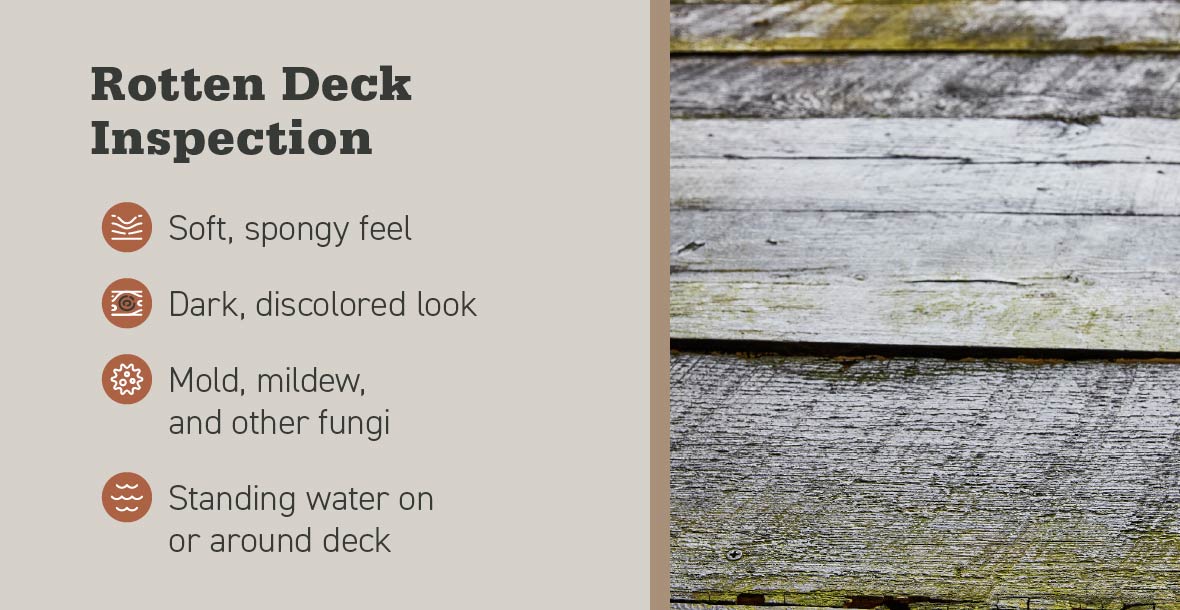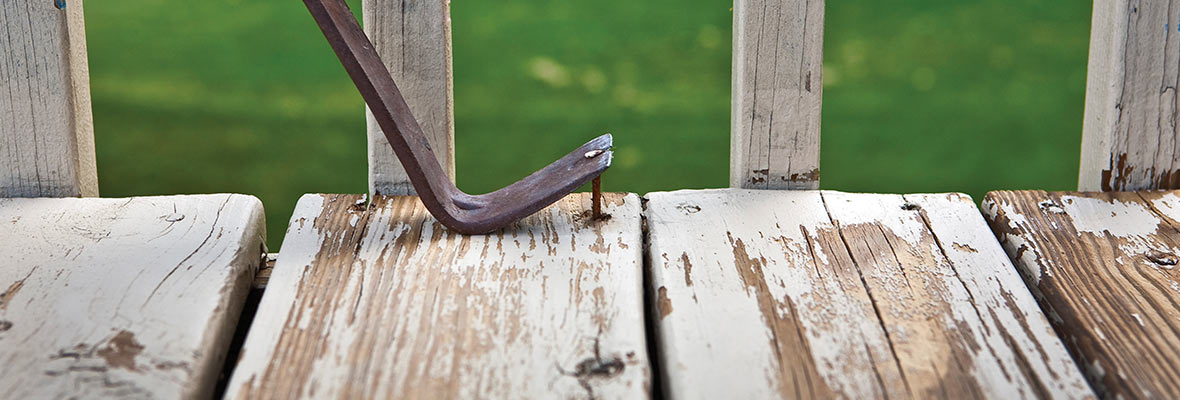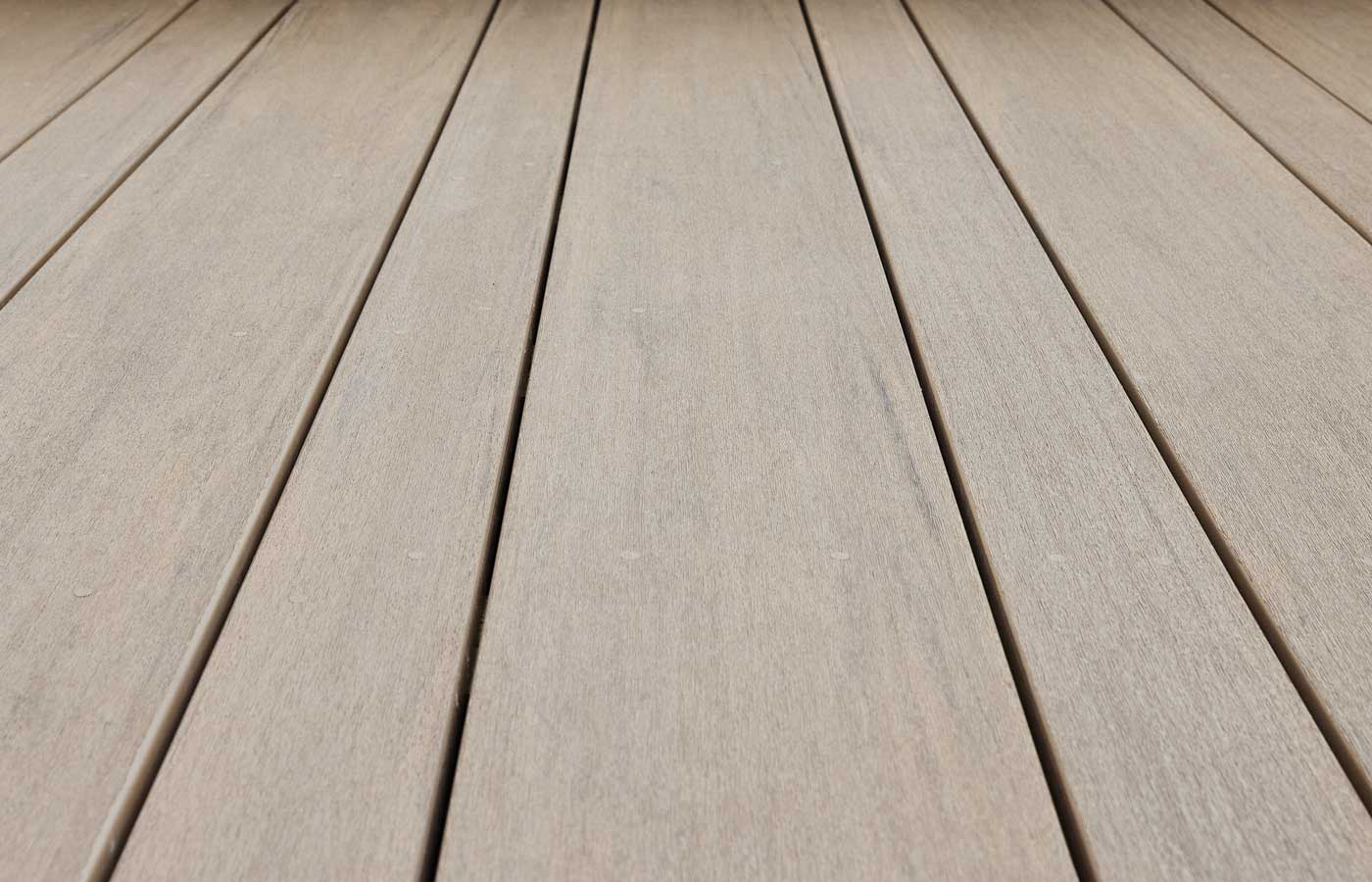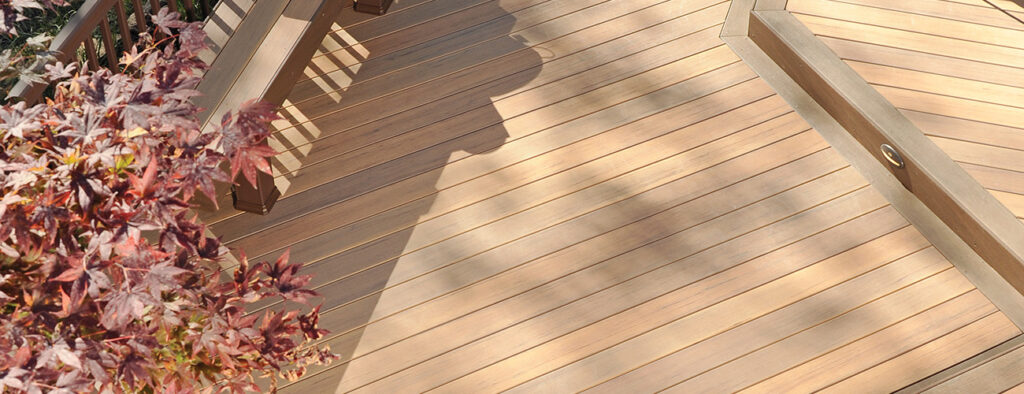Organic materials like wood tend to decompose over time, leading to deterioration, fungal infections, and rot. Since rot affects both the beauty and integrity of a deck, they require annual maintenance to prevent water and UV exposure damage.
Rotting decks become soft, cracked, split, and discolored. They require deck replacement or repair, depending on the severity of the damage.
Learn what causes a rotting deck, how to identify wood rot, and treatment advice below.
In This Article:
What causes a deck to rot?
Wood decks rot when repeated moisture exposure causes fungal growth, like mold and mildew. Untreated wood decks with old or no protective stain or sealer are particularly vulnerable. Poor drainage, improper flashing, and positioning next to a water source or too close to the ground can exacerbate water damage.
It’s not just rot you have to worry about. Excessive water exposure and rotting wood also invite pests, which can become infestations that further damage your deck.
How to prevent wood rot
A good design, proper installation, and regular deck maintenance are the best deck rot preventions. Proper design and installation account for water sources and drainage to prevent exposure in the first place. Since you can’t stop all exposure, annual maintenance ensures your deck is protected with a water-resistant sealer or stain.
It’s also wise to clean your deck annually to remove accumulated dirt, mildew, and mold. Regular deck inspections by yourself or a professional can identify and troubleshoot any concerns before they overdevelop.
Your decking material choice is also an important factor. Cedar, many hardwoods, and treated woods perform better than softwoods against water exposure. Of course, PVC and composite decking are manufactured with protective polymer caps to resist moisture and prevent rot, outperforming wood decking as a whole.
Signs of rotten deck boards
Discolored wood that’s soft and spongy to the touch is the first sign of deck rot. Mold and mildew also damage wood when left untreated. As you inspect your deck, look for cracking, splitting, splintering, and checking wood.

You can confirm wood is rotten with a simple screwdriver test. Pry a screwdriver into the wood where you suspect rot. The decking is likely rotten if the wood is soft and easily penetrated.
Inspect these areas and symptoms for rot:
- Posts and wood near the ground
- Dark, discolored, or moldy spots
- Around the ledger board
- Gutters, sprinklers, and other neighboring water sources
- Suspected pest infestations and damage
Always contact a qualified professional if you’re unsure about your deck’s condition.
Treating wood deck rot
Unfortunately, there’s no way to repair the damaged wood itself. You’ll have to replace any rotten decking and wood.
However, you can prevent further deck rot by inspecting the damage, identifying the cause, preventing water exposure, and maintaining your deck. Here’s what to do if you find wood rot on your deck.

Identify the extent of the damage
Before you can calculate decking costs and order materials, you need to know just how rotten your deck is. Thoroughly inspect all parts of your deck, including the deck’s surface, substructure, and vital connections like the ledger board.
A few rotten deck boards are easy to replace. However, you should hire a qualified professional if you suspect foundation rot.
Don’t forget to inspect anywhere that water accumulates and may damage the wood.
Replace rotten boards
You have to replace any rotten decking you identify to maintain a safe and attractive deck. You can replace individual boards if only a few are affected. Extensive decking rot may warrant replacing the entire deck surface.
If you’re considering replacing your entire deck surface, consider upgrading to manufactured decking to reduce future maintenance and rot. TimberTech Advanced PVC and Composite Decking boast 25+ year warranties and are moisture and fade-resistant.

Correct sources of damage
Beyond the deck repair itself, you should correct any leaks or damage that facilitate wood rot. Look for nearby water sources, like a leaky gutter or spots where water accumulates from poor drainage. Fix any leaks, damage, or other concerns that can cause your new decking to rot quickly.
Maintenance is also a key factor for prevention. If you’re keeping a wood deck, you have to seal or stain it annually to maintain good aesthetics and protection.
Upgrade to water-resistant composite decking
Modern decking materials like composite and PVC are resistant to water damage and fungi, and they aren’t wood, so they can’t develop dry rot. If you’re ready to reduce your annual maintenance chores and quit worrying about a rotting deck, consider upgrading to TimberTech Advanced PVC or Composite Decking.






